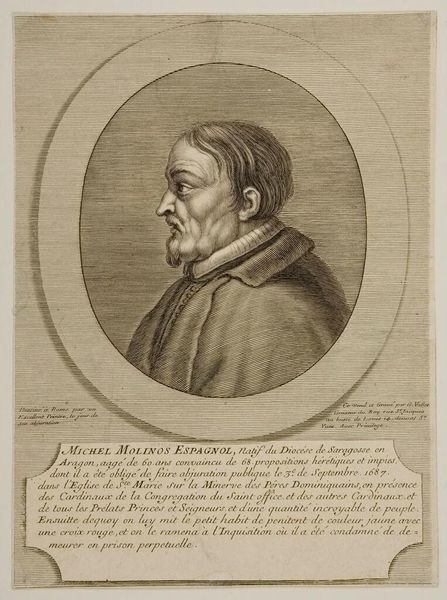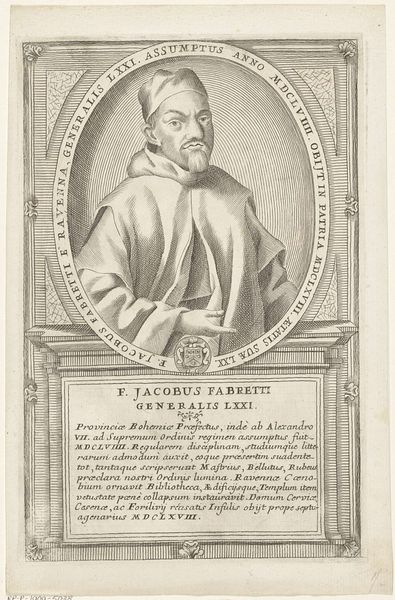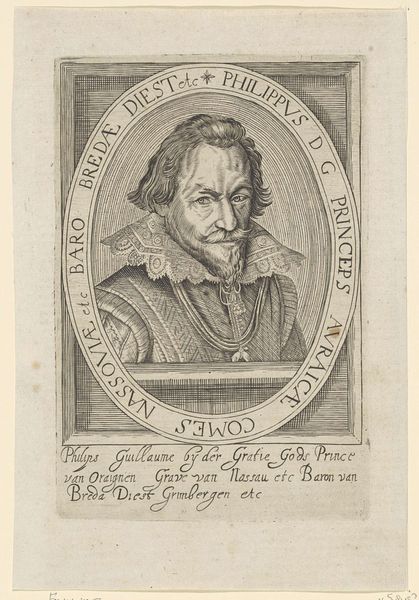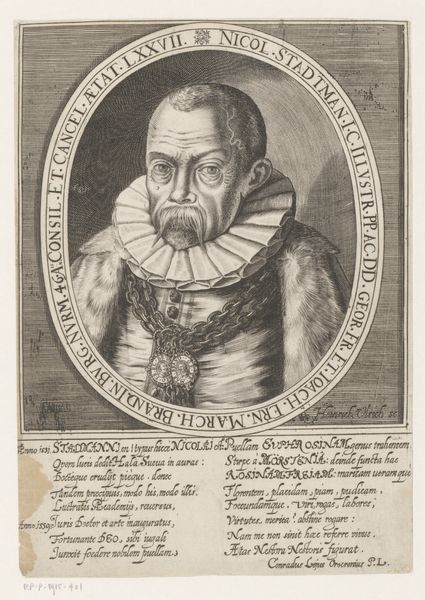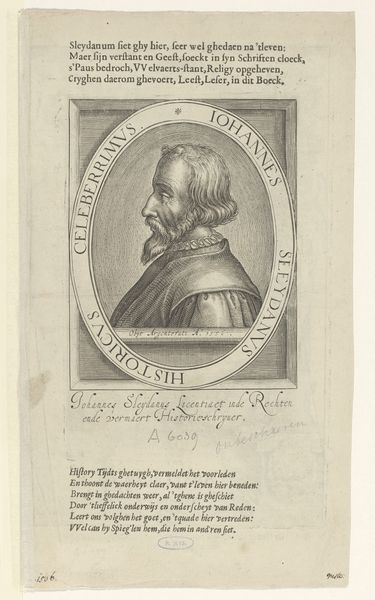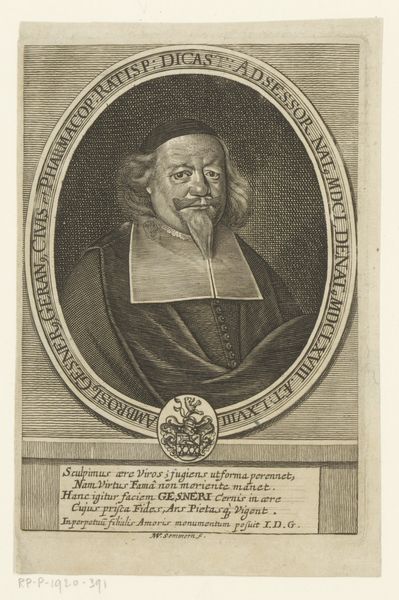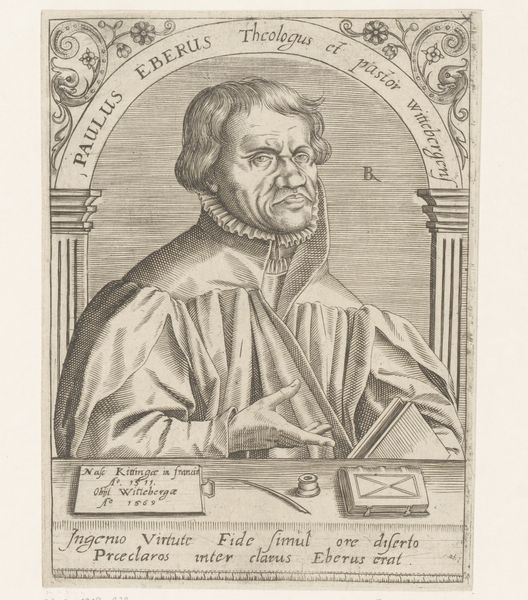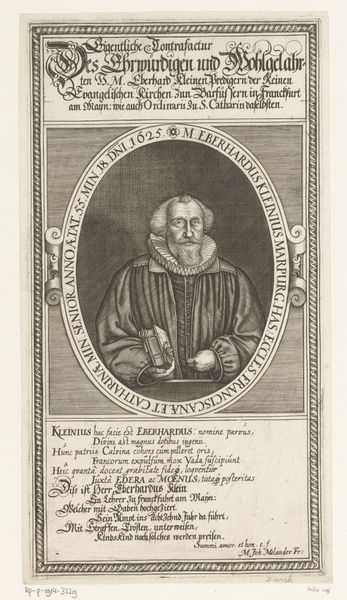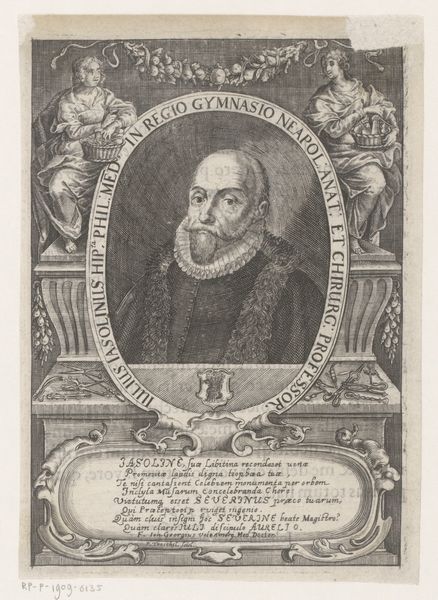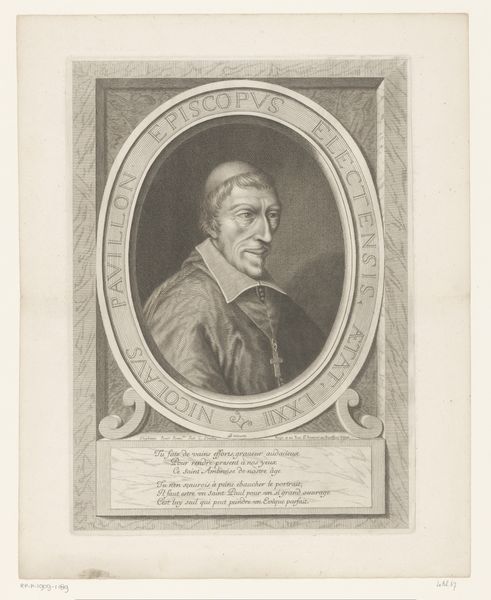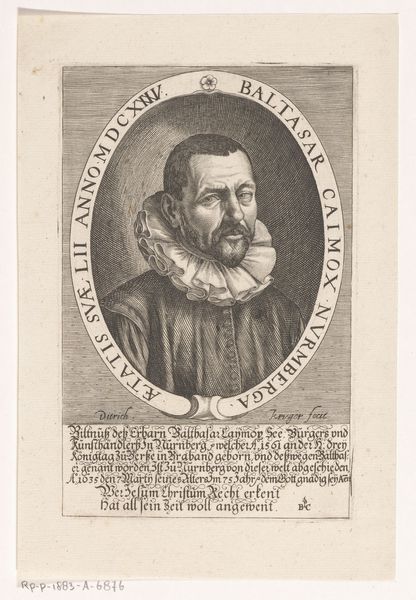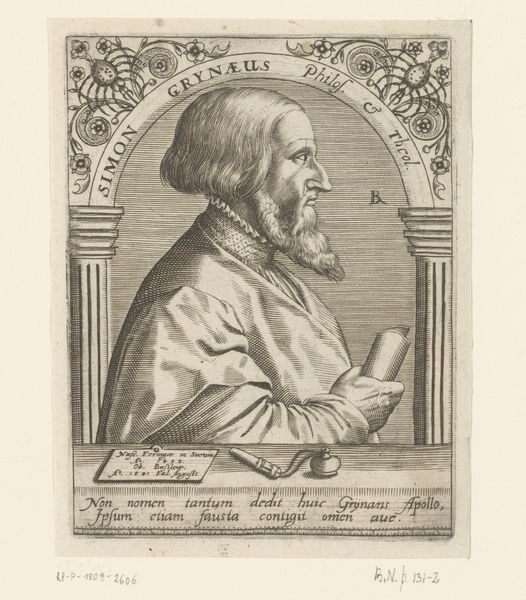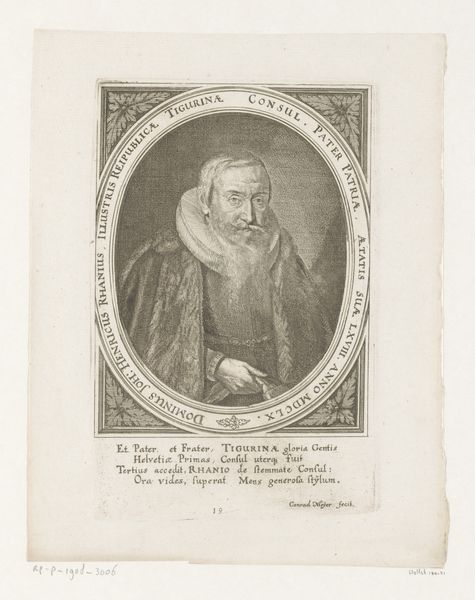
engraving
#
portrait
#
baroque
#
old engraving style
#
history-painting
#
engraving
Dimensions: height 263 mm, width 191 mm
Copyright: Rijks Museum: Open Domain
Curator: There's a stark, almost unsettling simplicity to this engraving. The somber figure is encased in an oval, ringed with text... It gives the sense of something constrained. Editor: Absolutely. Let’s contextualize this portrait. It's "Portret van Miguel de Molinos," an engraving made sometime between 1661 and 1704. The artist is Guillaume Vallet, as indicated in the bottom left corner, in a Baroque style. The composition really speaks volumes about power. He is confined both physically within the engraving, and by the judgement that encircles his head. The work certainly underscores a pivotal point in history, the public denouncement of Molinos as a heretic. Curator: Yes, and the Baroque era revels in dramatic contrasts. Here, the contrast lies in the minute detail afforded to Molinos’ face, set against the more abstracted textual elements. The very lines seem to suggest not just a likeness, but also a feeling – perhaps a suppressed defiance, but the overwhelming sense is resignation. Editor: Indeed, look at the gaze. Turned away, avoiding the viewer's eye. The lines of his face etched deeply, indicating suffering, weariness... a weight. As a historical document, it is incredibly compelling. Molinos was a figure of considerable religious and political import, known for his mystical theology of Quietism, which faced severe persecution, making this image much more than just a Baroque portrait. Curator: That’s fascinating. It seems the portrait attempts to present Molinos almost as an exemplar of humility, but the surrounding text practically screams condemnation. It encapsulates this duality in the visual symbolism. The quiet portrait enclosed by aggressive text...It captures the inner/outer turmoil quite remarkably. Editor: It reveals a very public performance of shaming. Consider the details contained within the text— his heretical claims, his subsequent imprisonment until his death. This image serves as a very deliberate, cruel record of the consequences of dissenting religious belief in that historical moment. The “quietism” is quite literally stifled and framed as a spectacle of power. Curator: Seeing it that way, through the lens of the persecuted against the powerful... adds another heavy layer. Editor: Exactly. History isn't simply what is shown to us but also how and why. This image becomes not just art but a complicated form of visual propaganda.
Comments
No comments
Be the first to comment and join the conversation on the ultimate creative platform.
